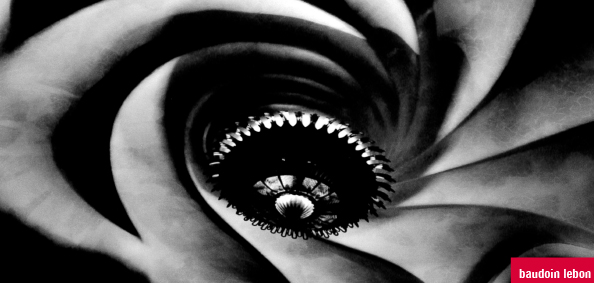GAUDI
01/16/2020 - 03/14/2020Eikoh HOSOE /
"To me photography can be simultaneously both a record and a 'mirror' or 'window' of self expression. The camera is generally assumed to be unable to depict that which is not visible to the eye and yet, the photographer who wields it well can depict what lies unseen in his memory." Eikoh Hosoe
A major figure in Japanese photography, Eikoh Hosoe at 83 years old, has been able to preserve his prolificacy and his influence. He started his career as an independent photographer in 1954 when he graduated from the Tokyo College of Photography. He received the special medal during the 150th birthday of the Royal Photographic Society. He is also honored with the title of Personal of Cultural Merit by his country, a prize awarded to the influential personalities of Japanese culture.
With a photographic language of which the innovative style places him among the Japanese creative avant-garde, Eikoh Hosoe imposes his style thanks to a quasi-baroque esthetic where the grain of the image, the compositions and the original contrasts appear reactionary faced to a postwar authoritarian Japanese society.
From 1957 to 61, along with the photographers Shomei Tomatsu, Ikko Naraha, Kikuji Kawada, Akira Sato and Akira Tanno, he forms the collective VIVO, which created the movement "School of image" whose ascendency will mark Japanese photographic style in the 1960s and 70s.
Inspired by his contemporaries (Bill Brandt, Ansel Adams, Edward Winston), Hosoe tracks the Beautiful. This perpetual quest is accomplished in the visual perception of the nudes, theatrical scenes that he elaborates. The body becomes a fixed idea for him, an unthinkable notion in a culture where the nude does not exist. Hosoe?s exploration of the esthetic and contrasting vision of bodies brings us back to a reflection on identity and the inner self.
Hosoe develops a unique meaning situated at the crossroads of several art forms, combining photography with theatre, dance, cinema and traditional Japanese art. At the end of the 1950s, he starts to achieve certain notoriety, thanks to his series Man & Woman. By surrounding himself with influential artists, he approaches different art forms. For his book Kamaitachi he works with Tasumi Hijikata, a dancer of butô theatre, and constructs it as a show. For the album Barakei-Killed by Roses he collaborates with the writer Yukio Mishima.
Thanks to the willingness of a Barcelonan editor to publish a Spanish version of the book Ba Ra Kei-Ordeal By Roses, Eikoh Hosoe's first contact with Gaudi?s works occurs. Yet, it is only 13 years later, in 1977 that he begins to photograph the Park Güell and the Sagrada Familia. He does not however seize at that moment the spirit or the ideology of the creator of these architectures, nor in 1978 during his 3rd shooting, and it is probably for that reason that his work continues until 1984.
Hosoe has never photographed Japanese architecture. He prefers humans as models but with Gaudi, architecture resembles for him bodies with strong sexual potential.
The architectural photographs of Gaudi and of Barcelona of which Hosoe feels the zen spirit, found in his book The Cosmos of Gaudi and presented for the first time in France by baudoin lebon gallery, does not move away from this search because his oriented and engaged perspectives resemble the curves of the human body whose depth in chiaroscuro recalls a spectacle of sound and light.




